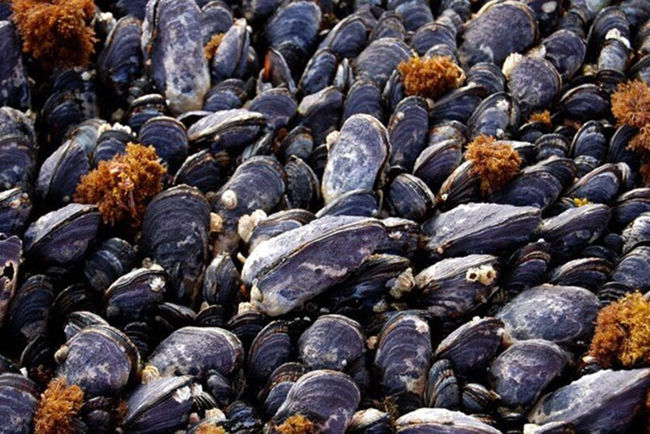Ocean acidification changes California's shell structure
According to new research, ocean acidity is altering the structure of shells along the west coast.
Previously, calcium crystals were abundant in California son's shell named Mytilus californianus. However, as detailed in a new study published in Global Change Biology, the unity of the shell structure of this species is no longer uniform.
Sophie McCoy, professor of biological sciences at Florida State University, said: "What we have seen in recent shells is small, malformed, uneven. This is significant changes. in the way these animals have to form their shells attached to the impact of an ocean chemistry '.
 Ocean acidification changes California's shell structure Picture 1
Ocean acidification changes California's shell structure Picture 1
Scientists at MSU analyzed the mineral composition of California shell samples from Tatoosh Island off the north coast of Washington. They compared this shell with shells since the 1970s, as well as male fossils several thousand years ago.
Their analysis shows that the shell composition has remained constant for thousands of years, but has changed in the last 15 years.
Chemical analysis also showed that the mussel shell has increased magnesium levels, suggesting that shell formation has been significantly altered due to changes in ocean acidity. Higher magnesium levels are responsible for the mineral change of this mussel shell.
Many studies show that global ocean temperatures increase, acidification and oxygen loss will also degrade biodiversity.
See more:
- Listed 10 largest species of creatures in the ocean
- Surprise with the facts about the ocean
- 'Ghost city' in the heart of the ocean and the mysteries of puzzle scientists
You should read it
- The 'dead zone' on the ocean threatens the life and ecosystem of many seas
- Surprise with the facts about the ocean
- Decipher the mystery of the extinction that destroyed 96% of marine life
- 10 photos showing how small people are in the ocean
- Fish are encroaching on the sea kelp species
- Acid in the Arctic Ocean increases rapidly with climate change
- Deep-water fish use hydrothermal vents to hatch eggs
- Found shelter for corals threatened by global warming
- Did you know: 100 scientists, 28 countries are calling for seagrass protection
- The ocean is losing 'breath'
- NASA will reveal new discoveries about extraterrestrial ocean worlds tonight
- Tips to play Otter Ocean for newbies
May be interested

Scientists discover what's left of the oldest Antarctic creature

Asian regional mapping scientists are prone to earthquakes in the hope of mitigating natural disasters

The ocean is losing 'breath'

Spiders emit rainbows from the abdomen causing fever

High-class electrical system helps release polluted wastewater

Coral reefs are severely bleached without the impact of El Nino






 Coral reefs are threatened by ocean acidification, which can disintegrate before 2100
Coral reefs are threatened by ocean acidification, which can disintegrate before 2100 Shell Sort in data structure and algorithm
Shell Sort in data structure and algorithm 10 photos showing how small people are in the ocean
10 photos showing how small people are in the ocean Interesting facts about the Pacific Ocean that not everyone knows
Interesting facts about the Pacific Ocean that not everyone knows What is Google Cloud Shell? What's remarkable about Cloud Shell?
What is Google Cloud Shell? What's remarkable about Cloud Shell? What is a shell?
What is a shell?